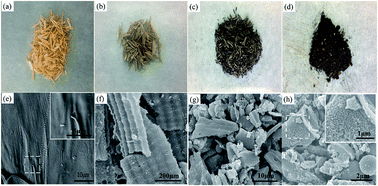Phosphorus-doped porous carbon derived from rice husk as anode for lithium ion batteries†
Abstract
We developed a simple and scalable chemical method to obtain phosphorus-doped porous carbon (P-PC–RH) by optimized acid treatment and thermal annealing of rice husk with triphenylphosphine (TPP). After doping with phosphorus (doping level of ∼4.14 at% P), the P-PC–RH electrode increases by almost half the reversible capacity (757 mA h g−1 after 100 cycles at 100 mA g−1) of porous carbon without phosphorus doping (PC–RH-x, x = 2, 4, 6). When cycled at a high current of 2000 mA g−1, it still delivers a reversible specific capacity of 382 mA h g−1. The improved electrochemical performance of P-PC–RH is attributed to the synergetic effect of the 3D interconnected porous structure and phosphorus doping, which can maintain perfect electrical conductivity throughout the electrode and enhance electrochemical activities for lithium storage.


 Please wait while we load your content...
Please wait while we load your content...